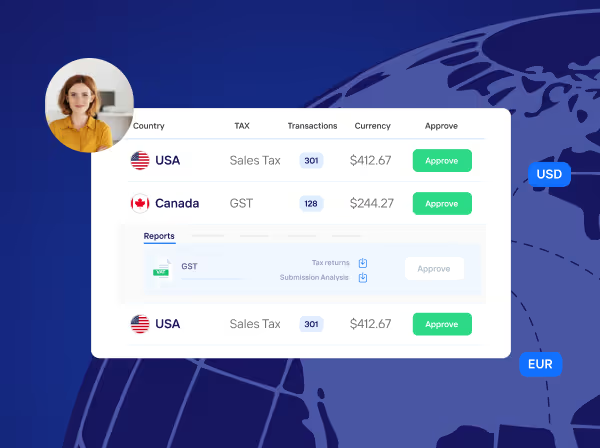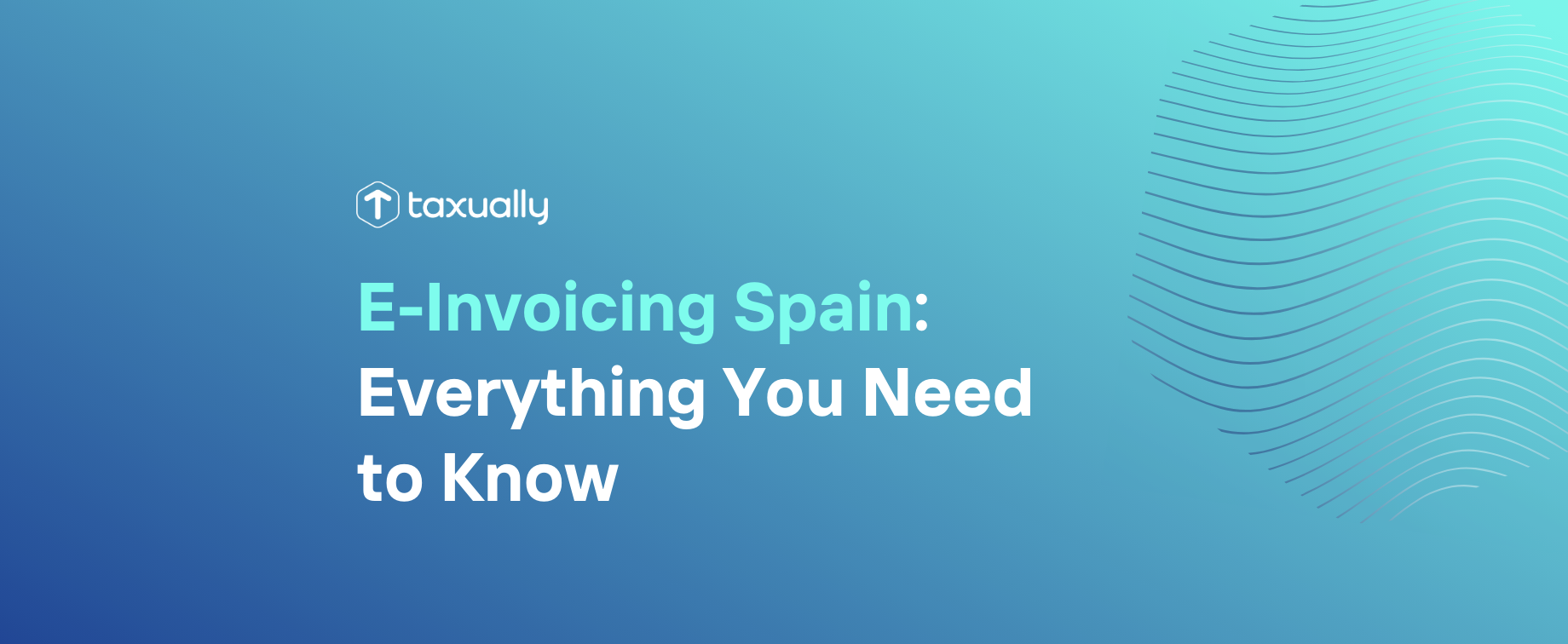Key takeaways
- Know your return types: EU businesses must file different returns—VAT, Intrastat, ESL, OSS, and IOSS—depending on the nature of their cross-border trade.
- Filing frequency varies: Most returns are due monthly or quarterly, but deadlines and thresholds differ across EU member states.
- Simplified systems for e-commerce: OSS and IOSS make it easier for online sellers to manage VAT across multiple EU countries through a single portal.
In the ever-evolving landscape of European tax and customs regulations, businesses engaged in cross-border trade must navigate a variety of tax and other return types to ensure compliance. These returns are essential for reporting different aspects of business activity, such as the movement of goods, sales across EU borders, and VAT liabilities. Understanding the distinctions between these return types can be challenging, but it's crucial for avoiding penalties and maintaining smooth operations.
This guide explains six of the most common return types that businesses in Europe encounter: Intrastat, ESL/ESPL, VAT return, local listings, OSS, and IOSS. Each of these returns has a specific purpose, and knowing when and how to submit them is key to maintaining regulatory compliance.
VAT returns
What is a VAT return?
A VAT (Value-Added Tax) return is the periodic submission businesses make to report the VAT they have charged on sales and the VAT they have paid on purchases. The VAT return helps authorities calculate the net VAT payable or refundable to the business.
Key information in VAT returns:
- Output VAT (VAT on sales)
- Input VAT (VAT on purchases)
- Net VAT due to the tax authorities or refundable
Who needs to submit VAT returns?
Any business registered for VAT in an EU country must submit VAT returns. This includes companies with physical operations in the country as well as foreign businesses that meet VAT registration thresholds.
When are VAT returns due?
VAT returns are typically filed on a monthly or quarterly basis, depending on the country’s requirements and the size of the business. There are also annual VAT returns for businesses in some EU countries.
See our VAT guides for more information.

Intrastat returns
What is Intrastat?
Intrastat is the system used to collect statistics on the trade of goods between EU member states. Introduced in 1993 when customs borders were removed within the EU, Intrastat requires businesses to report the movement of goods across EU borders once a certain threshold of sales or purchases is reached.
Key information in Intrastat returns:
- Commodity codes
- Value and quantity of goods
- Country of origin/destination
- Nature of the transaction (sale, lease, etc.)
Who Needs to submit Intrastat returns?
Businesses that exceed the Intrastat threshold—set by each EU country—are obligated to file these returns. The threshold applies to both arrivals (goods received from another EU country) and dispatches (goods sent to another EU country).
When are Intrastat returns due?
Intrastat returns are typically submitted on a monthly basis. The deadlines vary by country, but they are usually due shortly after the end of each month.
ESL/ESPL returns (EC Sales List)
What is an ESL return?
The EC Sales List (ESL)—sometimes referred to as ESPL—is a report that businesses must submit when selling goods or services to VAT-registered companies in other EU countries. The ESL details all the transactions between the reporting business and its customers in other EU states.
Key information in ESL returns:
- VAT numbers of customers
- Value of sales made to each customer
- Type of transactions (goods or services)
Who needs to submit ESL returns?
Any business making intra-EU sales of goods or services to VAT-registered customers must submit an ESL. If no cross-border sales were made during a given period, businesses may not need to file, but this can depend on local regulations.
When are ESL returns due?
ESL returns are generally required on a quarterly or monthly basis, depending on the volume of trade. Some countries may also allow or require annual filings for smaller traders.
Local listing
What is a local listing?
A local listing refers to specific VAT or tax filings required by individual EU countries for reporting domestic transactions. These can vary widely by country, with some requiring detailed listings of transactions within the country in addition to EU-wide returns like the ESL.
Key information in local listings:
The data required in local listings can vary but often includes details on:
- Domestic VAT
- Sales within the country
- Domestic service transactions
Who needs to submit local listings?
Businesses operating within certain EU countries that have additional domestic reporting requirements must file local listings. These listings are typically focused on domestic VAT transactions or other localized tax obligations.
When are local listings due?
Filing periods for local listings depend on the country and its tax rules. They can be monthly, quarterly, or annual.

One-Stop Shop (OSS) returns
What is the One-Stop Shop (OSS)?
The OSS scheme is part of the EU’s VAT e-commerce package, designed to simplify VAT reporting for businesses selling goods and services to consumers across multiple EU countries. OSS allows businesses to report and pay VAT on cross-border sales through a single online portal, rather than registering for VAT in each EU country where they sell.
Key information in OSS returns:
- Total value of sales to each EU country
- VAT due on sales in each country
- Country-specific VAT rates applied
Who can submit OSS returns?
Businesses selling goods or services to consumers in more than one EU country can use the OSS system to streamline VAT compliance. This is particularly relevant for e-commerce businesses and companies offering digital services like streaming or downloads.
When are OSS returns due?
OSS returns are filed on a quarterly basis, with deadlines set at the end of the month following the end of the quarter. For example, returns for Q1 are due by the end of April.
Import One-Stop Shop (IOSS) returns
What is the Import One-Stop Shop (IOSS)?
The IOSS system is another simplification scheme aimed at businesses selling goods to EU consumers, specifically from outside the EU. It allows companies to collect, declare, and pay VAT on goods valued up to €150 at the point of sale, ensuring a smoother experience for customers by avoiding customs delays or unexpected charges.
Key information in IOSS returns:
- Value of goods sold to EU customers
- VAT collected on these sales
- Country-specific VAT rates
Who can submit IOSS returns?
Non-EU businesses making low-value sales (under €150) to EU customers can opt into the IOSS scheme. This is especially useful for online retailers that ship directly to consumers in multiple EU countries.
When Are IOSS Returns Due?
Like OSS, IOSS returns are submitted quarterly, and the deadlines align with the end of the month following each quarter.
Conclusion
European tax compliance requires businesses to navigate several different return types, each with its own purpose and reporting requirements. Whether you're moving goods between EU countries, selling services across borders, or handling VAT on e-commerce transactions, understanding and correctly filing the various returns and reports required is essential.
By keeping track of these obligations and submitting returns on time, businesses can avoid penalties and maintain efficient operations within the EU market.
Do you need help with your VAT compliance, Intrastat, or ESL returns? Book a free call with one of our experts to find bespoke solutions for your business, optimize your VAT costs, and reach millions of new potential customers.
Frequently asked questions
New Year's Day - 1/1/2024Memorial Day - 5/27/20244th of July - 7/4/2024Labor Day - 9/2/2024Thanksgiving Day - 11/28/2024Day after Thanksgiving - 11/29/2024Christmas Eve - 12/24/2024Christmas Day - 12/25/2024
What are the main types of EU tax returns businesses need to file?
The most common EU returns include VAT, Intrastat, ESL (EC Sales List), local listings, OSS, and IOSS—each covering different reporting obligations such as VAT payments, goods movement, or cross-border sales.
Who needs to submit Intrastat and ESL returns?
Businesses that trade goods or services across EU borders must submit these returns once they exceed national thresholds. Intrastat tracks goods movement, while ESL reports sales to VAT-registered customers in other EU countries.
How do OSS and IOSS simplify VAT compliance?
The OSS and IOSS schemes allow businesses selling to consumers across the EU to report and pay VAT through a single portal, eliminating the need for multiple VAT registrations.
How often do EU tax returns need to be filed?
Filing frequency depends on the type of return and the country—monthly or quarterly for most returns, though smaller traders may qualify for annual filings.



















